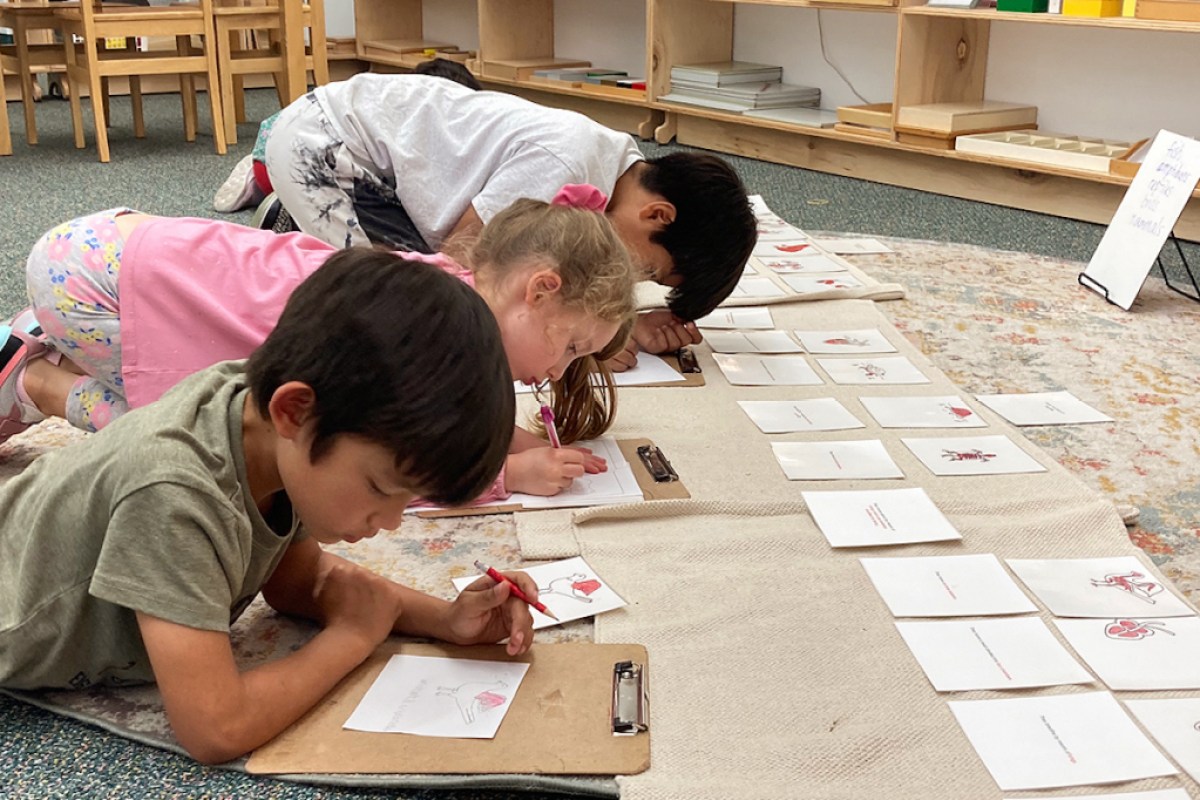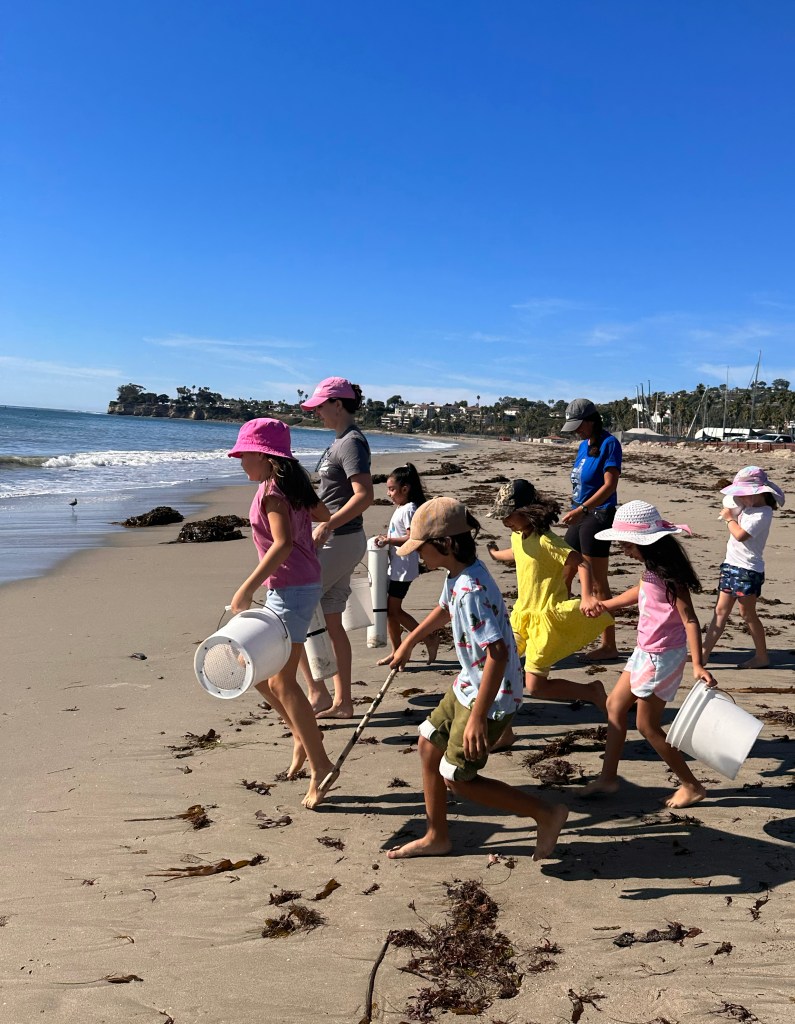The Pillars of
Leadership, Grace,
and Courtesy
South Coast Montessori
Equips Students with Social Skills
Critical for the 21st Century
By Tyler Hayden | November 16, 2023

Read all of the stories in our “Schools of Thought 2023” cover here.
“Leadership in Montessori is a powerful tool,” explained Melinda Creman, Lead Elementary Guide of South Coast Montessori. In its mixed-age classrooms, older children or those who have dived deeper into certain subjects and lessons, are given the opportunity to guide the less-experienced, often younger, kids in concepts that may be new to them. “Through this method,” Creman said, “students are able to develop strong leadership skills, and those needing support are able to find it in the group.”
The open Montessori environment also serves the elementary child’s need to socialize, she continued. “They are free to work where and with whom they choose and to converse with others, sharing information and ideas. Since the children encounter one another more often than in most traditional schools, they have many opportunities to practice social skills and resolve conflicts, which are highly needed skills in the 21st century.”
“Ideally,” Creman said, “this grace and courtesy will stay with them for the rest of their lives.”

How does that leadership dynamic come about in the classroom? Do the kids find it on their own, or is it taught by a teacher? Children are inherently helpful and supportive of one another. Our environments are designed to create opportunities for those traits to be expressed. At first, the teacher might suggest that a student work with or help another, typically younger, student. Very soon, however, it becomes a natural process, with classroom leaders stepping in when given the opportunity to assist another student. Conversely, students who need guidance will also approach another child on their own for support.
What specific subjects or lessons are most often guided by the older children? Virtually any subject may be led, with math, language, biology, art, and geography representing the most common. For example, a classroom leader might ask others to join a large research project about prehistoric animals, or a younger child might seek help from another student when attempting to find multiples of numbers using the long bead chain material.
How are students taught to recognize each other’s needs and feelings during these interactions? Montessori students develop an awareness that they are working within a shared community. Though it is important to care for yourself and monitor your own boundaries, it is also important to be aware of and acknowledge others’ needs and feelings by being a good listener, supportive, considerate, thoughtful, compassionate, and accepting of differences. These qualities can manifest themselves by the students letting others go first sometimes, being mindful about the words they use, and being open-minded to others’ points of view. Stories with characters and messages that support such traits are regularly shared with the class during read-aloud time.
How are inevitable conflicts resolved? Instead of simply ordering a child to do something, the teacher will often ask the student to reflect on actions that might have contributed or given rise to a conflict. The teacher might ask the student about the choices the student made that precipitated it. When a student’s actions are seen as a choice that can lead to better or worse outcomes, the child understands that he or she has the power to positively affect their environment.

Why is it so critical to learn and practice these kinds of social skills in the 21st century? What is it about our time in history that makes them more important than ever? In an increasingly interconnected world, where people from many cultures interact virtually and in person on a daily basis, the ability to understand each other and accept differences between cultures and people is important. Montessori’s curriculum, which stresses grace and courtesy, peaceful conflict resolution, and the acceptance of others, prepares students for such a world.
What do the terms “grace” and “courtesy” look like in a young child? How are they manifested? To do things with grace is to do things with positive intention. This involves being calm, kind, open-minded, giving, compassionate, and considerate of others. When students are practicing grace, they are honest, even if it means admitting they were in the wrong. Courtesy, which is intertwined with grace, involves being supportive of others. Courteous students take care of the environment by keeping it organized and clean and by properly caring for classroom materials, plants, and pets. They also step in to do something that is needed, such as offering to help a fellow student or the teacher, when no one else is volunteering.




You must be logged in to post a comment.